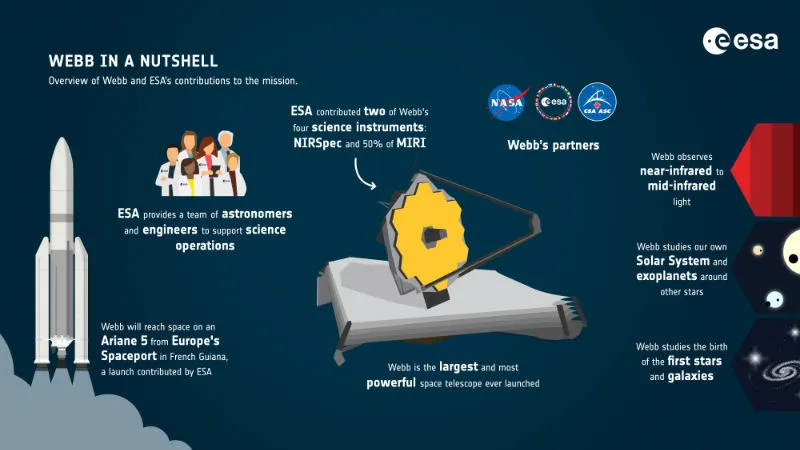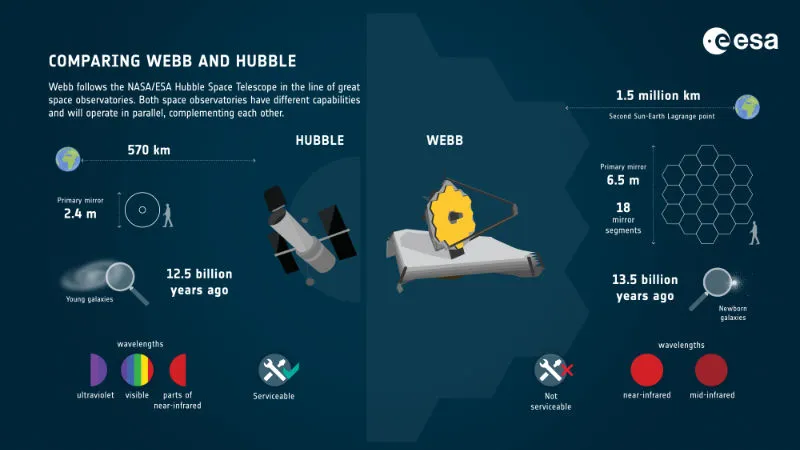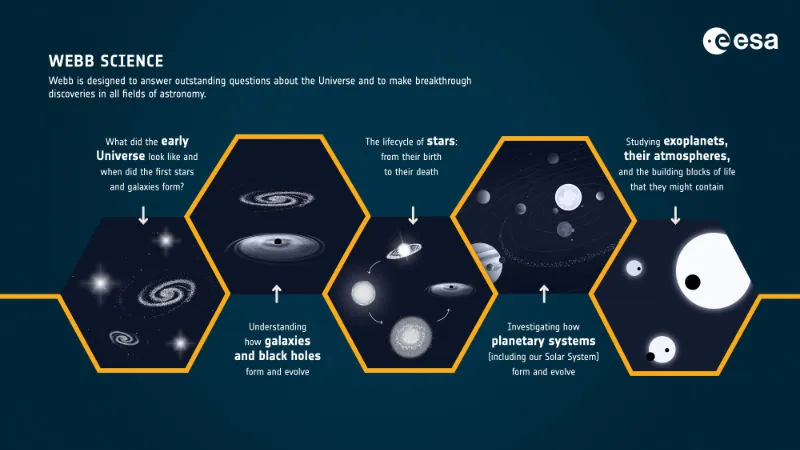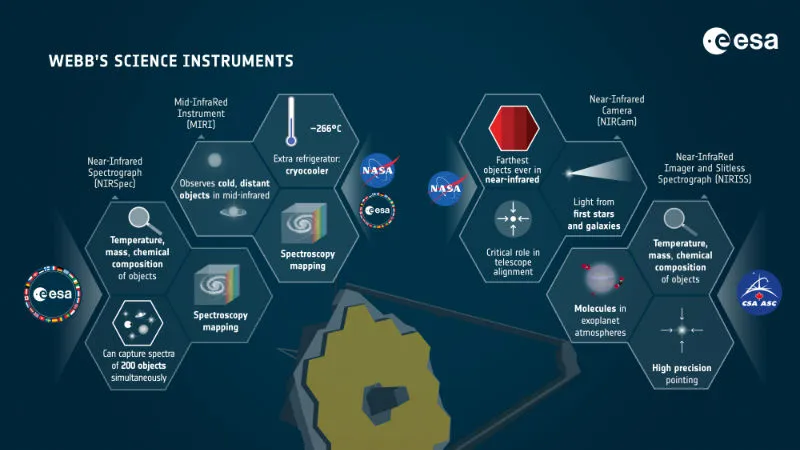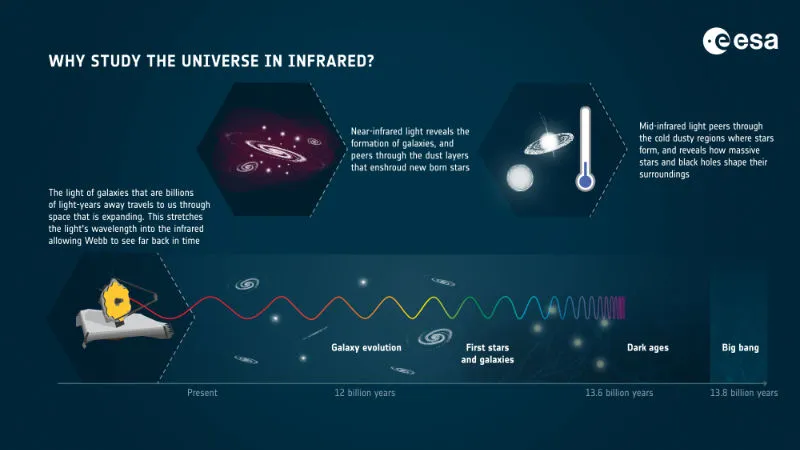James Webb Space Telescope (JWST or “Webb”)
The James Webb Space Telescope (JWST or “Webb”) is a joint NASA–ESA–CSA space telescope that is planned to succeed the Hubble Space Telescope as NASA’s flagship astrophysics mission. The JWST will provide improved infrared resolution and sensitivity over Hubble1, and will enable a broad range of investigations across the fields of astronomy and cosmology, including observing some of the most distant events and objects in the universe, such as the formation of the first galaxies.
Webb will be the largest, most powerful telescope ever launched into space. It follows in the footsteps of the Hubble Space Telescope as the next great space science observatory, designed to answer outstanding questions about the Universe and to make breakthrough discoveries in all fields of astronomy.
In this lifetime, we are entering another era of learning more about the Universe. The Hubble changed how we saw and understand the Universe around us. The Webb telescope will bring in the next unprecedented wave of information, and we are ready to blow our minds.
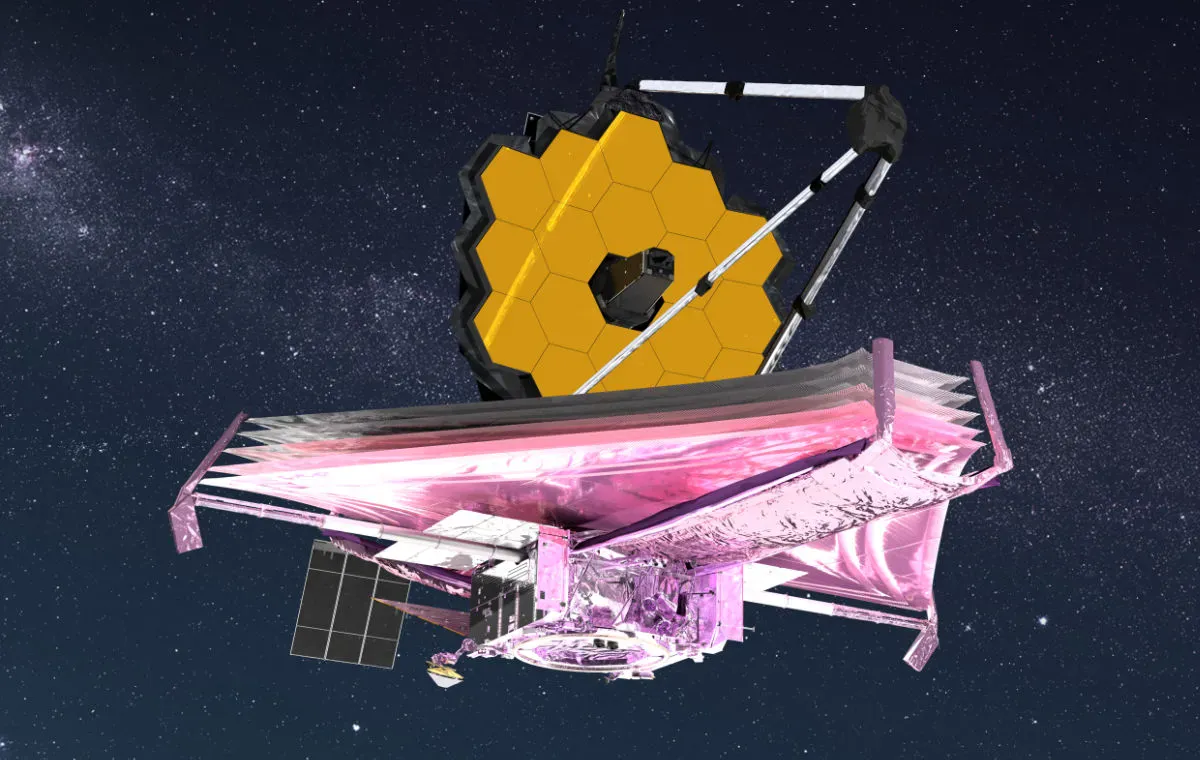
On Dec 25, 2021, the telescope is being launched on an Ariane 5 rocket from Europe’s Spaceport in French Guiana. From there it embarks on a month-long journey to its destination orbit around the second Lagrange point (L2), about 1,500,000 kilometres from Earth. In the first month after launch, Webb will unfold its sunshield, and then deploy its 6.5-metre primary mirror that can detect the faint light of distant stars and galaxies with a sensitivity a hundred times greater than that of Hubble.
Objects near this point can orbit the Sun synchronously with the Earth, allowing Webb to remain at a roughly constant distance and use a single sun-shield to block heat and light from the Sun and Earth. Unfortunately, the distance makes it impossible to do post-launch repair or upgrades. In the case of Hubble, the mirror had to be repaired later as it was wrongly fixed on launch.
ESA2 has a nicely done Webb Launch Kit (pdf) that details the telescope and the launch.
First Image (Jul 12, 2022)
On TUE, Jul 12, 2022, JWT delivers the deepest infrared image of the Universe yet. The image covers a patch of sky approximately the size of a grain of sand held at arm’s length by someone on the ground that reveals thousands of galaxies in a tiny sliver of vast universe. The near-infrared view brought out faint structures in extremely distant galaxies, offering the most detailed view of the early universe to date. The Image is of the galaxy cluster SMACS 07233.
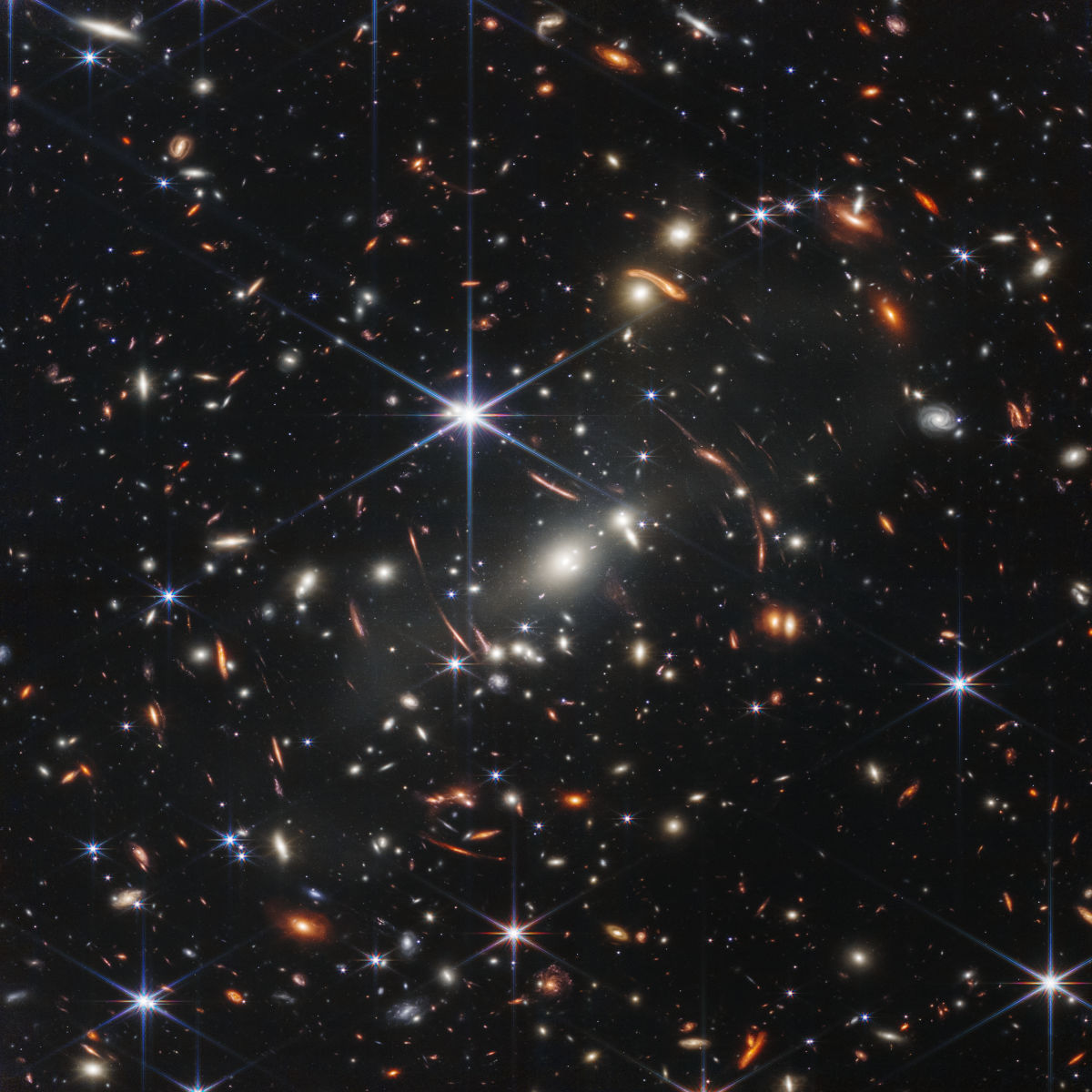
This deep field, taken by Webb’s Near-Infrared Camera (NIRCam), is a composite made from images at different wavelengths, totaling 12.5 hours – achieving depths at infrared wavelengths beyond the Hubble Space Telescope’s deepest fields, which took weeks.
The image shows the galaxy cluster SMACS 0723 as it appeared 4.6 billion years ago. The combined mass of this galaxy cluster acts as a gravitational lens, magnifying much more distant galaxies behind it. Webb’s NIRCam has brought those distant galaxies into sharp focus – they have tiny, faint structures that have never been seen before, including star clusters and diffuse features. Researchers will soon begin to learn more about the galaxies’ masses, ages, histories, and compositions, as Webb seeks the earliest galaxies in the universe.
-
Hubble Space Telescope (Hubble) is a space telescope that was launched into low Earth orbit in 1990 and remains in operation. It is one of the largest and most versatile, renowned both as a vital research tool and as a public relations boon for astronomy. The Hubble telescope is named after astronomer Edwin Hubble and is one of NASA’s Great Observatories, along with the Compton Gamma Ray Observatory (1991–2000), the Chandra X-ray Observatory, and the Spitzer Space Telescope (2003–2020). The Space Telescope Science Institute (STScI) selects Hubble’s targets and processes the resulting data, while the Goddard Space Flight Center (GSFC) controls the spacecraft. ↩
-
ESA, the European Space Agency, is an intergovernmental organisation of 22 member states dedicated to the exploration of space. Established in 1975 and headquartered in Paris, ESA. ↩
-
SMACS J0723.3-7327 is a cluster of galaxies with a proper distance of 5.12 billion light-years. It is a patch of sky visible from the Southern Hemisphere on Earth and often visited by Hubble and other telescopes in search of the deep past. It was the target of the first full-color image to be unveiled by the James Webb Space Telescope, imaged using NIRCam. It has been previously observed by the Hubble Space Telescope as part of the Southern MAssive Cluster Survey (SMACS), as well as Planck and Chandra. ↩
